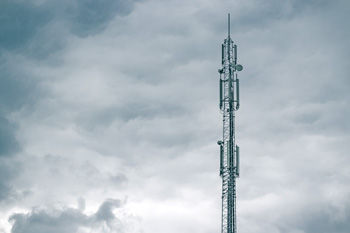Emergency Communication Plans
- Get Prepared
- Emergencies
- Current: Emergency Communication Plans
Flooding, tornadoes, snowstorms and severe thunderstorms are just a few of the most common disasters Indiana faces. Knowing how to communicate during a natural disaster or other crisis is a vital step in being prepared before one of these events.
Emergency Communication Plan Tips
Quick Tips
- Learn about disasters and how they may affect your ability to communicate with members of your household.
- Decide where your household members should meet if separated.
- Create paper copies of emergency contact information.
- During a disaster, try texting or using internet communication instead of phone calls.

What To Include
Communicating during an emergency situation can be difficult. Communication can be cut off completely or be severely limited. Consider the following information when making a household emergency communication plan:
- Understand how each disaster could impact forms of communication.
- Designate an out-of-state contact person.
- Choose a place for household members to meet if separated during a disaster.
- Make sure every household member understands who to call and where to meet.
- Regularly practice the communication plan.
- Create a copy of emergency contact numbers for every household member and disaster kit.
- Share information about emergency preparation so everyone can be ready.
Download communication plan checklist and template
When communicating during a disaster:
- Stay on the line: Do not hang up if a busy signal is heard. Stay on the line until a dial tone is heard, then place the call as normal.
- Try cell phones and landlines: If a loved one cannot be reached by a cell phone, try using a landline.
- Try texting: If a cell tower is damaged and not functioning properly, text messages may get through even though a call cannot.
- Internet options: If possible, communicating through email or social networking sites may prove effective. Also, try finding someone through the American Red Cross Safe and Well program.

Emergency Contacts
With access to current technology, many individuals no longer have phone numbers memorized. Consider compiling a paper list including the following phone numbers, to access in the event that those saved in a phone are unavailable.
- Loved ones
- Neighbors
- Out-of-state contact
- Doctor
- Veterinarian
- Poison control
- Police department, fire department, ambulance service
- Utility companies
- Insurance companies
Resources
Websites
- Business Communications Planning
Ready.gov - Continuity of Operations
Indiana Department of Homeland Security - Downloadable Family Communication Plan Templates
Ready.gov


State Emergency Communications
The Indiana Department of Homeland Security (IDHS) recognizes communications systems are vital during emergencies and maintains the following capabilities:
- IDHS dispatch and technical staff regularly participate in Federal Emergency Management Agency (FEMA) and Civil Air Patrol exercises in addition to responding to state emergencies and disasters. Learn more about the Civil Air Patrol and other organizations active during disasters
- IDHS has a Mobile Command Center, which is on-call 24 hours a day to maintain contact between personnel in the field and the State Emergency Operations Center (SEOC).
- Satellite phones have been installed in response vehicles, and a satellite dispatch system is installed in the SEOC. Learn more about the SEOC
- IDHS maintains a Radio Amateur Civil Emergency Service (RACES) team of volunteer amateur radio operators that assist when government emergency management offices need communications support, such as in the event of an infrastructure failure. Learn more about the IDHS AUXCOMM team and amateur radio in Indiana
